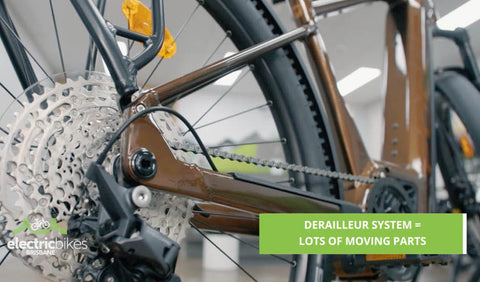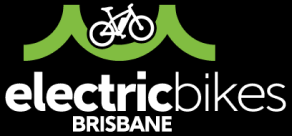If you're an avid cyclist or someone who enjoys bicycle and ebike technology, you have probably heard about belt drives. They've been gaining popularity in recent years as an alternative to the traditional derailleur chain-driven bikes. But what exactly is a belt drive, and is it worth the extra investment? Let's dive into the world of belt drives and explore their pros and cons.
Belt drive EBikes: Pros and cons
Pros:
- Smooth and silent operation, eliminating chain noise and rattling, no dropping chains.
- Longevity; belts tend to last longer than traditional chains
- Low maintenance; no greasing or frequent cleaning required
- Cleanliness; no lubrication means no grease stains on clothes or hands.
- Rust-resistant, ideal for riding in wet or coastal areas.
- Simplifies changing gears; suitable for experienced and inexperienced riders
Cons:
- Requires a specific frame and drivetrain design, limiting compatibility with existing bikes.
- Initial cost may be higher compared to chain-driven bikes.
- Roadside repairs may be more difficult
So, what is a belt drive?

Simply put, it's a system that replaces the traditional chain found on most bicycles with a belt. This belt is typically made of carbon fiber-reinforced rubber, giving it strength and durability. It's a bit like the belt you find in your car engine, but designed specifically for bicycles.
Advantages of having a belt drive
Now, let's talk about the advantages of having a belt drive bike.
Smooth and silent
First and foremost, they are exceptionally quiet.
You know that annoying clicking sound you hear when you pedal your chain-driven bike?
Well, with a belt drive, that sound is virtually eliminated. You can enjoy the peacefulness of your ride without any distracting noises.
Longevity and low maintenance
Another major benefit of a belt drive is its low maintenance requirement. Chains often need regular cleaning, lubrication, and regular replacements due to wear and tear.
Clean
On the other hand, belt drives require minimal maintenance. Since the belt is enclosed, it remains clean and doesn't attract dirt and grime like chains do. Plus, they last much longer than chains, reducing the need for frequent replacements.
Rust-resistant
Durability is another aspect where belt drives shine. Unlike chains, which can rust and stretch over time, belts are resistant to rust and won't stretch. This means you can rely on your belt drive for a longer period, saving you money on replacement parts. In our experience belt drives tend to last from 20,000km - 22,000km!

Additionally, belts don't require regular adjustments like chains do, making them hassle-free.
When it comes to performance, belt drives deliver a smooth and efficient ride. The flexibility and stiffness of the belt allow for power transfer with minimal loss. This translates into a more efficient pedalling experience, allowing you to make the most of your energy.
Simplifies gear changing
One other side advantage to having a belt drive is that they can only be used in conjunction with an internal gearing system (or single speed). This opens up a host of advantages from a gear usage and performance perspective.
Internal gearing systems are simpler to use and more forgiving for inexperienced riders. No dropping of chains and the ability to change gears while stationary to name two distinct advantages.
On the other hand it also provides access to incredible tech like the rohloff E-14 gears.
Downsides of belt drives
However, as with any technology, there are a few downsides to consider.
Availability
Firstly, belt drives are not as widely available as chain-driven bikes. While their popularity is increasing, you might find it more challenging to find a variety of belt drive options. The availability is improving, though, as more manufacturers embrace this technology.
Custom frame required

Secondly, belt drives require specific frames designed to accommodate them.
The better manufacturers will ensure there is a also a well engineered belt tensioner to ensure smooth running. The rear dropout, where the belt connects to the frame, needs to be opened to install or remove the belt. The frame must be designed to accommodate this easily when it is required to change the belt.
This means you can't simply swap out the belt on any bike; you need a frame that supports a belt drive system. Furthermore the frame needs to be well engineered to cope with the tension (and motor power) reliably for the life of the bike.
Roadside repairs
This introduces the aspect of roadside repairs if, for example, you need to change a tire or your belt snaps. From a tires perspective there are some excellent puncture protection solutions such as Tannus Armour to minimise this occurrence. However if you do need to you will need the right tools to split the frame plus a spare belt. Is a belt drive ebike worth the investment?
Higher cost
A belt drive ebike is generally more expensive than a chain-driven ebike (not always though).
While part of this can be attributed to the higher cost of the belt and associated gearing system, and the frame, it is also because belt drives tend to be found on higher spec bikes anyway. It is a system that is intended for high use and durability and this requires higher quality components and accessories throughout the entire bike.
Is a belt drive ebike worth the money?

The big question: is a belt drive ebike worth the money?
As always, it depends on you; your own needs and preferences.
If you value a quiet and low-maintenance ride, and if you're willing to invest a bit more upfront, then a belt drive bike could be an excellent choice for you. It's a long-term investment that can save you money on maintenance and replacement parts in the long run, and can save you hassle. Plus they are great for beginners and experienced riders alike.
On the other hand, if you're on a tighter budget, have very steep terrain or prefer the sportier feel and performance that comes with the Derailleur system, a chain-driven bike might be a better fit. Chains are tried and tested and they still offer reliable, and in many cases, excellent performance.
Want a belt drive ebike?
The brands that we stock that offer models with belt drives include Riese & Muller, Moustache, Kalkhoff and Tern.
You will find belt drive ebike models in our...
- Adventure & Touring range,
- Cargo & Commercial range,
- Comfort & Cruising range,
- Commuter & Urban and
- Folding and Compact range.
Please don't hesitate to contact us if you want some help choosing the best bike or to test ride a model that you have in mind.
Want to Understand More About Gearing Systems on EBikes?
See our article: Gearing Systems on EBikes Explained




